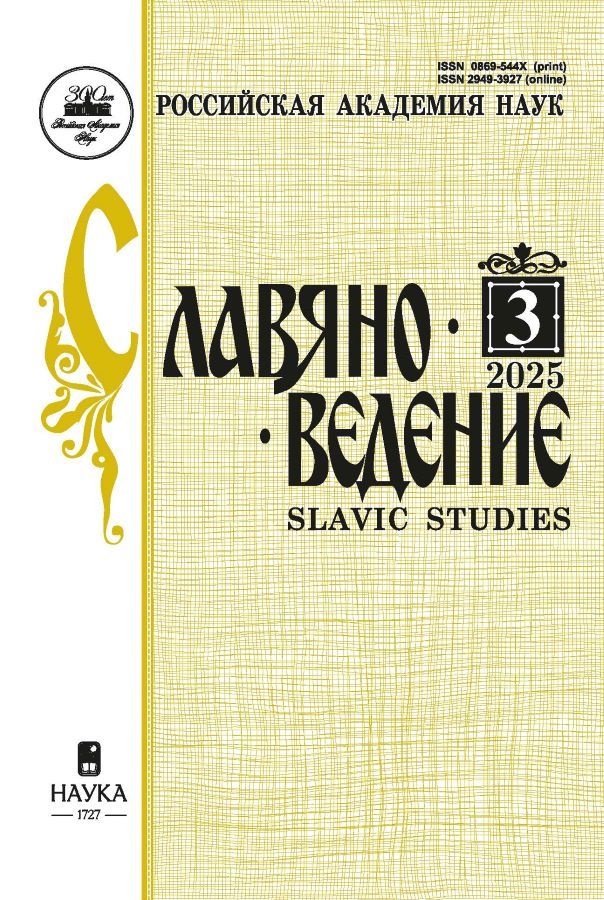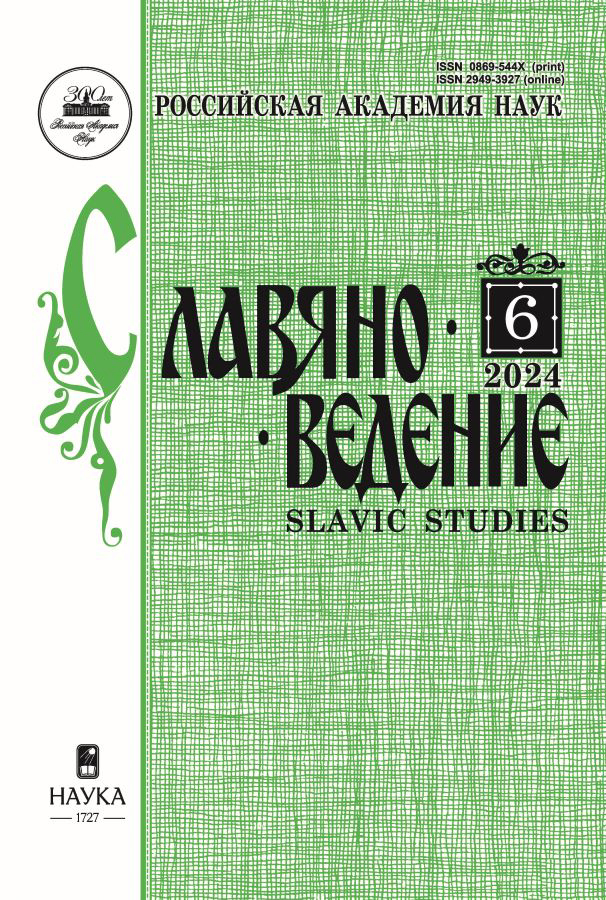Lexical rarities of the ethnic cultural borderland
- Authors: Belova O.V.1
-
Affiliations:
- Institute of Slavic Studies of Russian Academy of Sciences
- Issue: No 6 (2024)
- Pages: 22-33
- Section: Articles
- URL: https://rjmseer.com/0869-544X/article/view/652921
- DOI: https://doi.org/10.31857/S0869544X24060022
- EDN: https://elibrary.ru/XHDYBR
- ID: 652921
Cite item
Abstract
The article offers an analysis of dialect lexical examples from the archival materials of the turn of the 19th–20th centuries and the end of the 20th century. The author’s aim is to clarify their existence in modern dialects of the Russian-Belarusian borderland. The region under study is a spatially complexly structured area where different ethnic, language and cultural traditions coexist. Several examples from the archives of the Smolensk region were selected for the study: phrasemes, chrononyms, names of folk demonology characters and terms related to magical rituals. Such “lexical rarities”, the cultural semantics of which are of interest to ethnolinguists, dialectologists, and folklorists, are also markers thanks to which a modern researcher can fix the boundaries of dialect microareals, clarify the geography of the existence of lexical units with the loss of their ethnographic context (for example, folk ritual).
About the authors
Olga V. Belova
Institute of Slavic Studies of Russian Academy of Sciences
Author for correspondence.
Email: olgabelova.inslav@gmail.com
ORCID iD: 0000-0001-5221-9424
DSc. (Philology), Principal Research Fellow
Russian Federation, MoscowReferences
- Agapkina T.A. Mifopoeticheskije osnovy slavianskogo narodnogo kalendaria. Vesenne-letnii tsikl. Moscow, Indrik Publ., 2002, 816 p. (In Russ.)
- Antropov N.P. Nominatsii belorusskoi dozhinal’noi «broody» v kartograficheskom aspekte. Zhivaia starina. 2008, № 4, pp. 33–36. (In Russ.)
- Belova O.V. O «tochechnykh» siuzhetakh russko-belorusskogo pogranich’ia, Belaruskaje Padzvinne: vopyt, metodyka i vyniki paliavykh dasledavanniaŭ, ed. U.A. Lobach. Navapolatsk, PDU Publ., 2018, pp. 160–169.
- Belova O.V. Slovari «narodnogo iazyka» russko-belorusskogo pogranich’ia: po materialam iz Gosudarstvennogo arkhiva Smolenskoi oblasti (nachalo XX v.). Belova O.V., Moroz A.B., Yasinskaia M.V. Slovo ustnoje i slovo pis’mennoje v iazyke etnokul’turnogo pogranich’ia. Moscow, Neolit Publ., 2023, pp. 164–178. (In Russ.)
- Strakhov Aleksandr B. Po stranitsam slovaria russkikh narodnykh govorov (zamechaniia, popravki, soobrazheniia). Strakhov Aleksandr B. Ocherki po vostochnoslavianskoi narodnoi leksike. Cambridge — «Palaeoslavica» – Massachusetts, 2023a, pp. 171–292 (Palaeoslavica, 2023, vol. 31, no. 1).
- Strakhov Aleksandr B. Sila slova: zalozhnyi pokoinik i maternaia bran’. Strakhov Aleksandr B. Ocherki po slavianskoi etnolingvistike i etnografii. Cambridge – «Palaeoslavica» – Massachusetts, 2023b, pp. 71–84 (Palaeoslavica, 2023, vol. 31, no. 2).
- Tolstaya S.M. Kul’turnaia semantika slav. *kriv-. Slovo i kul’tura. Pamiati Nikity Il’jicha Tolstogo, vol. 2, ed. T.A. Agapkina, A.F. Zhuravlev, S.M. Tolstaya. Moscow, Indrik Publ., 1998, pp. 215–229. (In Russ.)
- Tolstaya S.M. Dialektnyje arealy literaturnykh slov (Zametki na poliakh «Leksicheskogo atlasa belorusskogo iazyka»). Tolstaya S.M. Mir cheloveka v zerkale iazyka. Ocherki po slavianskomu iazykoznaniiu i etnolingvistike. Moscow, Indrik Publ., 2019, pp. 577–588. (In Russ.)
- Vendina T.I. Tipologiia leksicheskikh arealov Slavii. Moscow, St. Petersburg, Nestor-Istoriia Publ., 2014, 692 p. (In Russ.)
- Zhuravlev A.F. Iazyk i mif. Lingvisticheskii kommentarii k trudu A.N. Afanas’jeva «Poeticheskije vozzreniia slavian na prirodu». Moscow, Indrik Publ., 2005, 1004 p. (In Russ.)
Supplementary files











